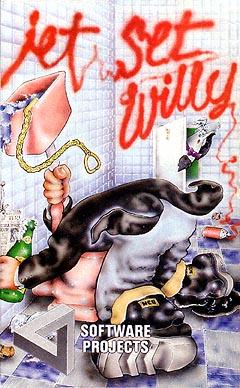
Jet Set Willy is a platform video game originally written by Matthew Smith for the ZX Spectrum home computer. It was published in 1984 by Software Projects and ported to most home computers of the time.

Krome Studios Melbourne, originally Beam Software, was an Australian video game development studio founded in 1980 by Alfred Milgrom and Naomi Besen and based in Melbourne, Australia. Initially formed to produce books and software to be published by Melbourne House, a company they had established in London in 1977, the studio operated independently from 1987 until 1999, when it was acquired by Infogrames, who changed the name to Infogrames Melbourne House Pty Ltd.. In 2006 the studio was sold to Krome Studios.
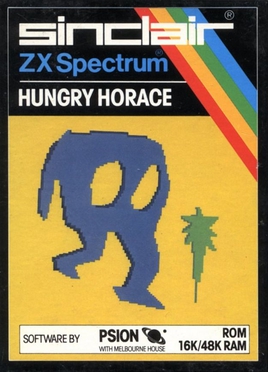
Hungry Horace is a video game developed by Psion Software Ltd. and published by Sinclair Research in 1982 for Commodore 64, Dragon 32/64, Timex Sinclair 2068, ZX Spectrum, and later for Microsoft Windows and Android. It is the first game in the Horace series. The gameplay is noted to be very similar to Pac-Man, involving the collection of food pellets in a maze while avoiding enemies. Despite this, critical reception of the game was generally positive upon release.

CRL Group plc was a British video game development and publishing company. Originally CRL stood for "Computer Rentals Limited". It was based in King's Yard, London and run by Clem Chambers.

The Hobbit is an illustrated text adventure computer game released in 1982 for the ZX Spectrum home computer and based on the 1937 book The Hobbit, by J. R. R. Tolkien. It was developed at Beam Software by Philip Mitchell and Veronika Megler and published by Melbourne House. It was later converted to most home computers available at the time including the Commodore 64, BBC Micro, and Oric computers. By arrangement with the book publishers, a copy of the book was included with each game sold.

Bug-Byte Software Ltd. was a video game company founded in 1980 in Liverpool, initially producing software for the Acorn Atom and ZX80. Bug-Byte's first hit was Don Priestley's Mazogs which was one of the most successful titles for the ZX81. In 1983, it published Manic Miner, considered to be one of the most influential platform games of all time. The company went into liquidation in 1985 but their name and logo were purchased by Argus Press PLC for use as a budget software label.
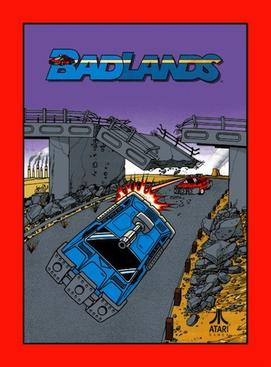
Badlands is a 1989 arcade video game published by Atari Games. It was ported by Domark under the Tengen label to the Amiga, Amstrad CPC, Atari ST, Commodore 64, and ZX Spectrum. The game is a re-themed version of Atari's previous racing games Super Sprint and Championship Sprint with the addition of vehicular combat. Badlands is set in the aftermath of a nuclear war and races around abandoned wastelands with many hazards. Three gun-equipped cars race around a track to win prizes.

Aliens: The Computer Game is a 1986 video game developed by Software Studios and published by Electric Dreams Software initially for Amstrad CPC, Commodore 64 and ZX Spectrum. It is based on the film of the same title. Ports for the Commodore 16 and MSX were developed by Mr. Micro and published in 1987.
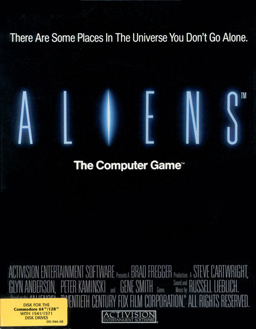
Aliens: The Computer Game is a 1986 video game developed and published by Activision for the Commodore 64, Apple II based on the film of the same title. As Activision's UK subsidiary Electric Dreams Software had independently released their own version of the game with the same title, the game was renamed for European release. Initially planned to be released as Aliens: The Second Part., it was finally published under the title Aliens: US Version with ports for the Amstrad CPC and ZX Spectrum produced by Mr Micro.
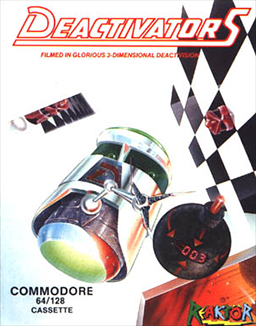
Deactivators is a 1986 puzzle video game designed by David Bishop and Chris Palmer, developed by Tigress Marketing and System Software, and published by Ariolasoft's action game imprint Reaktor. The player controls bomb disposal robots known as deactivators and must use them to deactivate bombs planted by terrorists in five research complexes. The concept for the game came from a brainstorming session between Bishop and Palmer; its design and development took five to six months to complete. It was released for the Amstrad CPC 464, Commodore 64, and ZX Spectrum platforms in October 1986.

Waxworks is an interactive fiction game by Brian Howarth and Cliff J. Ogden. It was published by Digital Fantasia in 1983 for the Commodore 64, Plus/4, ZX Spectrum, and BBC Micro. It was the 11th game in the Mysterious Adventures series.
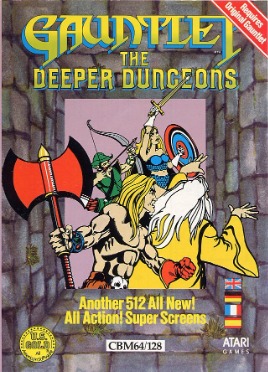
Gauntlet: The Deeper Dungeons is an expansion pack for Gauntlet.

Escape from Singe's Castle, also known as Dragon's Lair Part II - Escape From Singe's Castle, is a computer game for the Amstrad CPC, Commodore 64 and ZX Spectrum home computers, released by Software Projects in 1987.

Jack the Ripper is a text adventure computer game designed by St. Bride's School and released by CRL in 1987 for the Commodore 64, Amstrad CPC and ZX Spectrum home computers. The game is based on the notorious "Jack the Ripper" murders in 1880s London.

Light Force is a 1986 vertically scrolling shooter designed by Greg Follis and Roy Carter, developed by their company Gargoyle Games, and published under their Faster Than Light imprint. It was released for the Amstrad CPC, Commodore 64, and ZX Spectrum platforms.

Brian Clough's Football Fortunes is a video game featuring Brian Clough, released in 1987 for the Amiga, Amstrad CPC, Amstrad PCW, Atari 8-bit, Atari ST, BBC Micro, Commodore 16, Commodore Plus/4, Commodore 64, DOS, Acorn Electron, MSX and ZX Spectrum.
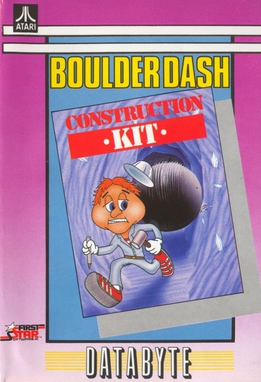
Boulder Dash Construction Kit is the fourth game in the Boulder Dash series. It published for the Commodore 64 and Atari 8-bit family in 1986 by Epyx. Ports were released for the Apple II, Atari ST, Amiga, Amstrad CPC, ZX Spectrum, and MS-DOS. The Spectrum version was rereleased as Boulder Dash IV: The Game. Boulder Dash Construction Kit includes new levels and a level editor.

Game Over II is a combination scrolling shooter and platform game developed and published by Dinamic Software in 1987 for the ZX Spectrum, MSX, MS-DOS, Amstrad CPC, Commodore 64, and Atari ST.

Questprobe featuring Human Torch and the Thing is the third and final video game in the Questprobe series.
Olli & Lissa is a series of three action video games: Olli & Lissa: The Ghost of Shilmore Castle (1987), Olli & Lissa II: Halloween (1987), and Olli & Lissa 3: The Candlelight Adventure (1989).



















